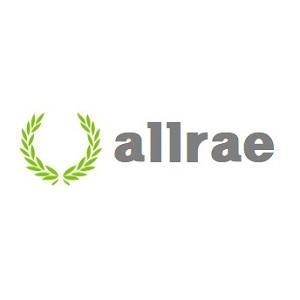| 일 | 월 | 화 | 수 | 목 | 금 | 토 |
|---|---|---|---|---|---|---|
| 1 | 2 | 3 | ||||
| 4 | 5 | 6 | 7 | 8 | 9 | 10 |
| 11 | 12 | 13 | 14 | 15 | 16 | 17 |
| 18 | 19 | 20 | 21 | 22 | 23 | 24 |
| 25 | 26 | 27 | 28 | 29 | 30 | 31 |
- 장기체류보험
- 글로벌케어
- 캄보디아보험
- 해외장기체류보험
- 해외실손
- #유학 #공증 #이주 #이민 #쿠알라룸푸르 #답사 #유학생보험 #국제학교 #코타키나발루 #페낭 #랑카위 #세컨홈비자 #하노이 #한달살기 #비자 #번역 #보험 #롱스테이비자 #치앙마이 #호치민 #베
- 해외장기체류자보험
- 올래월드
- 번역
- 공증
- 국제학교
- 한화손해보험
- 쉥겐조약
- 캄보디아입국
- 현지채용
- 태국입국
- 베트남입국
- 올래말레이시아
- 말레이시아국제학교
- 베트남특별입국
- 해외보장
- 해외여행자보험
- 말레이시아비자
- 베트남보험
- 유학생보험
- 주재원
- 태국롱스테이비자
- 장기체류보험보험
- 태국보험
- 유학생
- Today
- Total
국제학교, 글로벌케어, 올래말레이시 아,해외부동산, 올래월드, 번역공증,
다섯가지 타입의 말레이시아 국제학교 본문
The private and international education landscape in Malaysia has changed over the last decade with parents now having more options for an international school education for their children. Every year, the list of international schools in Malaysia grows longer. There are currently over 150 international schools in Malaysia with a number of new schools slated to open in 2019 and 2020. Each of these international schools is independently run and differ from one another in terms of background, curricula, ethos, learning environment and tuition fees.
https://cafe.naver.com/allraemalaysia

1. Established International Schools for Expatriate Children
1. 외국인 아동을위한 국제 학교 설립
International schools were initially established to meet the educational needs of children of expatriates working in Malaysia or in the region. These schools were considered international because they used curricula different from that in use in public schools in the country and have a diverse school community. There were few Malaysian children enrolled in these schools in the early days as permission from the Ministry of Education was required then.
Examples: Alice Smith School, Dalat International School, Garden International School, The International School of Penang (Uplands) and The International School of Kuala Lumpur (ISKL)
2. Purpose-built New Schools
2. 목적 별 신학교
Many purpose-built international schools were established to meet the growing demand for international education in the country following the lifting of the quota of local student enrolment in international schools. There are mega property developers such as the Sunway Group Malaysia that have set up international schools in Selangor and Johor. Furthermore, a number of international schools were also established by education groups such as Taylor’s Education Group, HELP International Corporation, GEMS Education and Kingsley EduGroup.
Examples: HELP International School, Kingsley International School, Sunway International School and Taylor’s International School
3. British Boarding Schools
3. 영국 기숙 학교
A number of British boarding schools have established branches in Malaysia. Many of these boarding schools have the option of day boarding, flexi-boarding and full-boarding to cater to each student’s needs. British boarding schools are known for their focus on academic excellence, top-notch school facilities and emphasis on extracurricular activities. A British boarding school education aims to create independent students who are prepared to tackle the challenges of university life.
Examples: Epsom College in Malaysia, King Henry VIII College, Kolej Tuanku Ja’afar and Marlborough College Malaysia
4. English-medium Private Schools
4. 영어-중간 사립 학교
The growing demand for international education by local parents encouraged a number of private schools to add an international curriculum option to their syllabus. Some private schools have also ceased offering the national curriculum altogether, focusing only on the international curriculum. The British curriculum and Cambridge curriculum leading up to the IGCSE examinations are commonly offered at these schools.
Examples: Acmar Schools, Asia Pacific Schools, R.E.A.L Schools and Rafflesia International & Private Schools
5. Mission Schools
5. 선교 학교
There are also a few mission schools in the country that have expanded into international education. Mission schools have a rich history in Malaysia as a result of British colonialism and are known for providing quality education. The most common mission schools are Convent schools, La Salle schools and Methodist Schools.
Examples of schools: St. John’s International School, St. Joseph’s Institution International School Malaysia and Wesley Methodist School (International)
There is a wide range of international schools in Malaysia today. Some schools charge higher fees while others are more affordable. The ratio of local to expatriate teaching staff also varies from school to school. In addition, these schools differ in terms of facilities offered – some schools are only equipped with basic facilities while others have more extensive facilities. Some schools provide more options to students in terms of extracurricular activities, while others have a limited number of options.
Therefore, parents are encouraged to do their research early and thoroughly before deciding on an international school for their child. As schools differ widely, it is important to visit schools and attend Open Days to get a more comprehensive picture of what a school has to
offer.
'국제학교 (Int'l School)' 카테고리의 다른 글
| 조호바루 국제학교(Y7) - 쉬운학비_한장정리 (0) | 2020.06.22 |
|---|---|
| 입학문의 - APIS & 오픈데이 (0) | 2020.06.21 |
| 올래 - 강남에서 만나요~! (0) | 2020.06.15 |
| AISM 호주식-학교에서 전해온 360도 지도^^ 교실외 편의시설~~ (0) | 2020.06.15 |
| 페어뷰(Fairview) 국제학교 - Virtual Exhibition (0) | 2020.06.13 |




